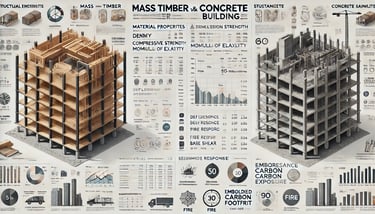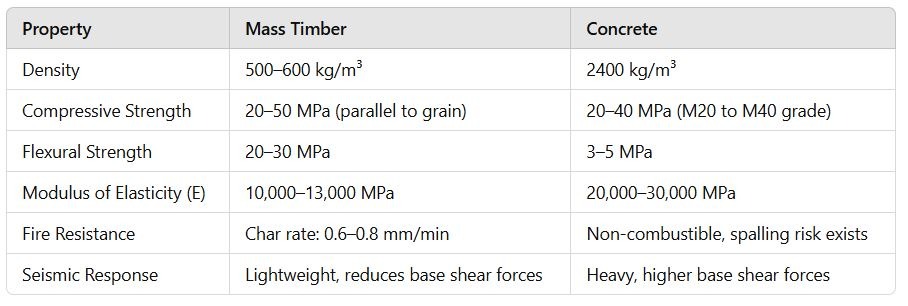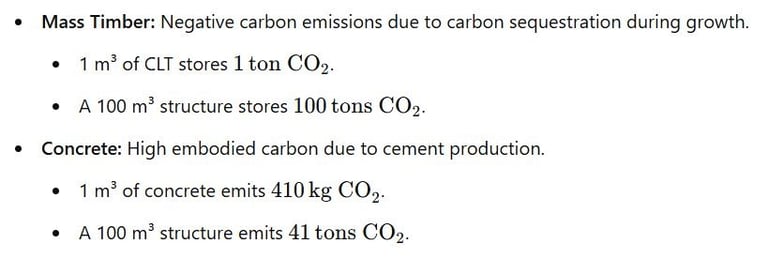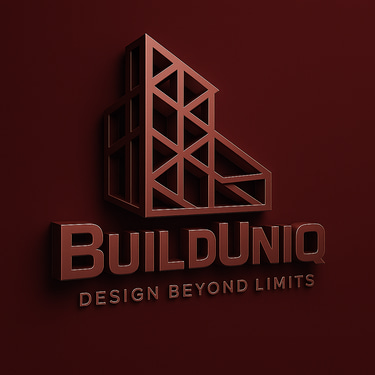Mass Timber vs. Concrete: A Structural and Sustainability Perspective
Mass timber is often considered the eco-friendly alternative to traditional materials like concrete. While concrete dominates modern construction, advancements in engineered wood products such as Cross-Laminated Timber (CLT) and Glued Laminated Timber (Glulam) are challenging the status quo. Let’s delve into a detailed comparison between mass timber and concrete buildings based on structural performance, environmental impact, and cost-effectiveness.


1. Material Properties Comparison


2. Structural Efficiency: Load-Bearing Capacity
Scenario: Floor System Design
Mass Timber: CLT floor panel with a thickness of 150 mm.
Concrete: Reinforced concrete slab of the same thickness.
Span: 6 m, uniformly distributed load = 3 kN/m² (live load).
Mass Timber: Deflection Calculation


Concrete: Deflection Calculation


Result:
Concrete exhibits lower deflection due to its higher modulus of elasticity.
Mass timber provides acceptable deflection within serviceability limits and is significantly lighter, reducing structural demands on foundations.
3. Seismic Response
Base Shear Comparison
Building Weight:

Base Shear Force (Zone IV/Seismic Design Category D):


Result:
Mass timber buildings experience significantly lower seismic forces due to their lightweight nature, reducing costs for foundation and lateral force-resisting systems.
4. Fire Resistance
Scenario: 90-Minute Fire Exposure


Result:
Mass timber retains a predictable load-bearing capacity due to the insulating char layer. Concrete’s performance depends on proper fireproofing and mix design.
5. Sustainability: Carbon Footprint Comparison
Embodied Carbon
Building Weight:


Life-Cycle Assessment (LCA):
Mass timber offers a carbon-negative lifecycle, while concrete is a major contributor to global emissions.
Conclusion
Mass timber and concrete both have distinct advantages. From a structural engineering perspective:
Mass Timber: Lightweight, sustainable, and suitable for seismic zones.
Concrete: Higher stiffness and fire resistance, ideal for large spans and heavy loads.
By integrating the two materials in hybrid designs, engineers can achieve optimal performance, cost-effectiveness, and sustainability.
At BuildUniq, we are at the forefront of adopting innovative materials and sustainable design practices.
Let's build your
dream PROJECT.
Disclaimer:
The calculations and comparisons provided on this page are for informational purposes only and are intended to showcase technical insights into mass timber and concrete construction.


